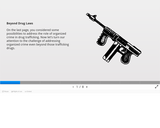
"Beyond Drug Laws" Slideshow
- Subject:
- Career and Technical Education
- Criminal Justice
- Material Type:
- Interactive
- Provider:
- Michigan Virtual
- Date Added:
- 07/29/2019

"Beyond Drug Laws" Slideshow

Black Market Notecards
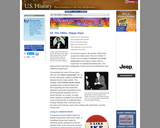
A booming economy helped shape the blissful retrospective view of the 1950s. A rebuilding Europe was hungry for American goods, fueling the consumer-oriented sector of the American economy. Conveniences that had been toys for the upper classes such as fancy refrigerators, range-top ovens, convertible automobiles, and televisions became middle-class staples.
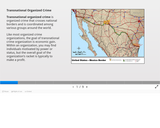
Transnational Organized Crime Slideshow
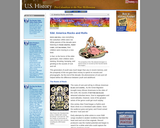
This generation of youth was much larger than any in recent memory, and the prosperity of the era gave them money to spend on records and phonographs. By the end of the decade, the phenomenon of rock and roll helped define the difference between youth and adulthood. Rock and roll sent shockwaves across America. A generation of young teenagers collectively rebelled against the music their parents loved. In general, the older generation loathed rock and roll. Appalled by the new styles of dance the movement evoked, churches proclaimed it Satan's music.
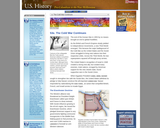
As the British and French Empires slowly yielded to independence movements, a new Third World emerged. This became the major battleground of the Cold War as the United States and the Soviet Union struggled to bring new nations into their respective orbits. Across the Third World, the two superpowers squared off through proxy armies.
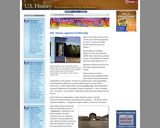
Many in the 1950s strove for the comfort and conformity depicted on such TV shows as Father Knows Best and Leave It to Beaver. But despite the emerging affluence of the new American middle class, there was a poverty, racism, and alienation in America that was rarely depicted on TV.
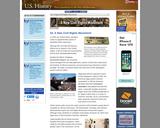
Despite the efforts of Radical Reconstructionists, the American South emerged from the Civil War with a system of laws that undermined the freedom of African Americans and preserved many elements of white privilege. No major successful attack was launched on the segregation system until the 1950s.
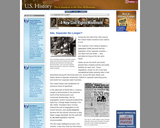
In the aftermath of World War II, America sought to demonstrate to the world the merit of free democracies over communist dictatorships. But its segregation system exposed fundamental hypocrisy. Change began brewing in the late 1940s. President Harry Truman ordered the end of segregation in the armed services, and Jackie Robinson became the first African American to play Major League Baseball. But the wall built by Jim Crow legislation seemed insurmountable.

On a cold December evening in 1955, Rosa Parks quietly incited a revolution by just sitting down on the bus.
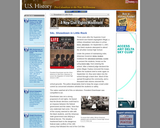
Three years after the Supreme Court declared race-based segregation illegal, a military showdown took place in Little Rock, Arkansas, when nine black students attempted to attend the all-white Central High School on September 3, 1957.
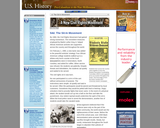
By 1960, the Civil Rights Movement had gained strong momentum. The nonviolent measures employed by Martin Luther King Jr. helped African American activists win supporters across the country and throughout the world. On February 1, 1960, a new tactic was added to the peaceful activists' strategy. Four African American college students walked up to a whites-only lunch counter at the local Woolworth's store in Greensboro, North Carolina, and asked for coffee. When service was refused, the students sat patiently. Despite threats and intimidation, the students sat quietly and waited to be served.
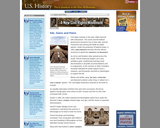
Civil rights activists in the early 1960s teemed with enthusiasm. The courts and the federal government seemed to be on their side, and the movement was winning the battle for public opinion. Under the protection of federal troops, in 1962 James Meredith became the first African American to attend the University of Mississippi.
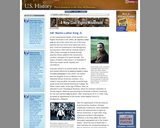
As the unquestioned leader of the peaceful Civil Rights Movement in the 1960s, Dr. Martin Luther King Jr. was at the same time one of the most beloved and one of the most hated men of his time. From his involvement in the Montgomery bus boycott in 1955 until his untimely death in 1968, King's message of change through peaceful means added to the movement's numbers and gave it its moral strength. The legacy of Martin Luther King Jr. is embodied in these two simple words: equality and nonviolence.
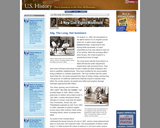
The Watts urban uprising, part of what was often called "the long, hot summer," had actually begun in 1964. When a white policeman in Harlem shot a black youth in July 1964, a similar disturbance flared (though on a lesser scale than the Watt's riots.) Rochester, Jersey City, and Philadelphia exploded as well. From 1964 to 1966, outbreaks of violence rippled across many other northern urban areas, including Detroit, where 43 people were killed.
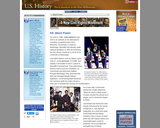
This section looks at the development and the ideology of the Black Power movement. Includes information about leaders such as Stokely Carmichael and Huey Newton
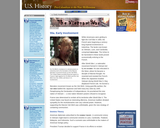
While Americans were girding to fight the Civil War in 1860, the French were beginning a century-long imperial involvement in Indochina. The lands now known as Vietnam, Laos, and Cambodia comprised Indochina. The riches to be harvested in these lands proved economically enticing to the French.
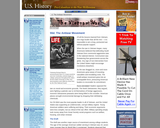
As the Vietnam war dragged on, more and more Americans grew weary of mounting casualties and escalating costs. The small antiwar movement grew into an unstoppable force, pressuring American leaders to reconsider its commitment.
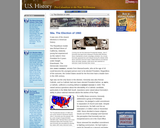
Coming into the first televised Presidential debate, John F. Kennedy had spent time relaxing in Florida while Richard Nixon maintained a hectic campaign schedule. As a result, Kennedy appeared tan and relaxed during the debate while Nixon seemed a bit worn down. Radio listeners proclaimed Nixon the better debater, while those who watched on television made Kennedy their choice.
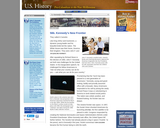
Like King Arthur and Guinevere, a dynamic young leader and his beautiful bride led the nation. The White House was their home, America their kingdom. They were John F. and Jacqueline Kennedy.